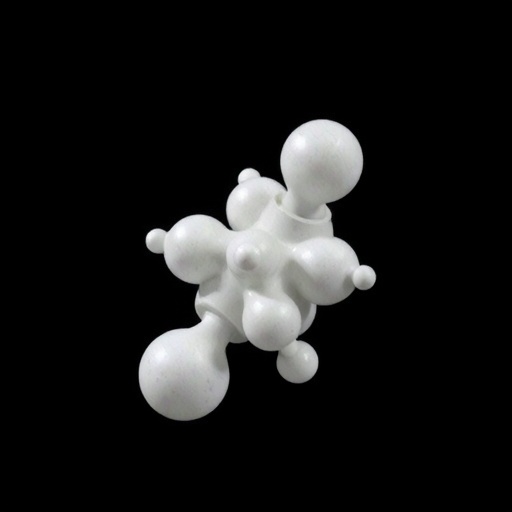In the realm of sustainable materials, the ongoing quest for innovative and eco-friendly composites has garnered significant attention from scientists and industry experts alike. The recent study conducted by Bourassi, Miled, and Cauret represents a breakthrough in this field, focusing on the development and characterization of biocomposites that incorporate hydroxyethylcellulose (HEC) and epoxidized natural rubber (ENR). This combination promises to address several environmental concerns while providing a viable alternative to conventional plastics.
Hydroxyethylcellulose, a cellulose derivative, serves as a versatile, biodegradable polymer. Its water-soluble nature and non-toxic profile make it an appealing choice for various applications. The significance of HEC lies in its abundant availability, derived from cellulose, which is one of the most plentiful organic polymers on Earth. This biopolymer’s excellent film-forming properties, viscosity, and ability to blend with other materials enhance the performance metrics of the composites being studied.
On the other hand, epoxidized natural rubber—the second component of this innovative blend—offers unique mechanical properties and resilience, providing a rubbery characteristic that can withstand varied environmental conditions. ENR is a modified form of natural rubber where epoxide groups are introduced into its molecular structure. This chemical modification enhances its thermal-oxidative stability and compatibility with polar materials, such as HEC. The synergy between HEC and ENR paints a promising picture for developing applications that meet rigorous performance standards while also being environmentally considerate.
The researchers employed a rigorous methodology to fabricate these biocomposites. A series of tests was conducted to evaluate the physical, mechanical, and thermal properties of the materials. The study extensively utilized scanning electron microscopy (SEM) to observe the morphological characteristics of the biocomposites. Such imaging techniques unveil the micro-level interactions between the HEC and ENR, providing insights into the distribution of phases within the composite and how effectively they are interwoven at a molecular level.
Further assessments included tensile strength and elongation at break measurements, fundamental characteristics that determine the practicality of material applications. The results showcased variances in performance metrics based on composition ratios. Understanding these variations facilitates granular control over the properties of the biocomposites, allowing for tailored applications ranging from packaging materials to biomedical devices.
Thermal stability is another dimension thoroughly explored in the study. Thermogravimetric analysis (TGA) provided data regarding the degradation temperatures of the composites, highlighting their operational temperature range. Notably, the incorporation of ENR significantly improved the thermal stability of HEC, important for components exposed to elevated thermal conditions. This finding is crucial for long-term applications where heat exposure can compromise material integrity.
The environmental impact of utilizing biocomposites is underscored by their biodegradability, a significant factor given the increasing global concerns over plastic waste accumulation. Traditional synthetic plastics pose significant challenges due to their non-biodegradable nature, leading to ecological harm. In contrast, the biocomposites developed in this study not only degrade more readily but also offer a potential for composting post-consumption, thereby aligning with a circular economy model.
Additionally, the sustainability of sourcing HEC from renewable resources, coupled with the utilization of natural rubber, presents an attractive environmental profile that conventional petrochemical materials lack. By shifting focus towards plant-based polymers, the researchers contribute significantly to reducing reliance on finite fossil fuel resources while also supporting agricultural economies.
Moreover, the findings pave the way for applications in the food industry. The versatility of HEC, alongside the elasticity of ENR, suggests potential as biodegradable food packaging materials that fulfill regulatory requirements while ensuring product safety and longevity. This dual functionality could revolutionize the packaging sector, catering to both consumer demands for sustainability and corporate responsibility in waste reduction.
Future work stemming from this research holds exceptional promise. Developing optimized formulations based on these biocomposites may lead to improved properties tailored to specific applications. As the demand for sustainable materials continues to rise, further investigations could explore different ratios, additives, or alternative natural fibers that enhance the physical and mechanical attributes of the composites, expanding their applicability.
To broaden the impact of their findings, the authors also highlighted the importance of collaborative efforts in the field of materials science. Engaging with cross-disciplinary teams can drive innovation and unlock new pathways for research, fostering advancements that meet the challenges of environmental sustainability in material production.
In conclusion, the research by Bourassi, Miled, and Cauret not only sets a precedent within the domain of biocomposites but also echoes a wider call for the adoption of environmentally friendly materials across multiple sectors. By venturing into the synthesis of hydroxyethylcellulose and epoxidized natural rubber, the study encapsulates the potential for creating sustainable solutions that resonate with the pressing need for innovation in materials science.
As we continue to push the boundaries of research and applications, it is pivotal to keep exploring the intersection of technology and sustainability. The findings presented suggest that with the right materials and methods, it is indeed feasible to develop the next generation of products that are beneficial not only to users but also to our planet, embodying the principles of sustainability and innovation in every strand of their form.
Subject of Research: The development and characterization of biocomposites based on hydroxyethylcellulose and epoxidized natural rubber.
Article Title: Development and characterization of biocomposites based on hydroxyethylcellulose and epoxidized natural rubber.
Article References: Bourassi, L., Miled, B., Cauret, L. et al. Development and characterization of biocomposites based on hydroxyethylcellulose and epoxidized natural rubber.
Sci Rep 15, 40003 (2025). https://doi.org/10.1038/s41598-025-23615-6
Image Credits: AI Generated
DOI: https://doi.org/10.1038/s41598-025-23615-6
Keywords: Biocomposites, Hydroxyethylcellulose, Epoxidized Natural Rubber, Sustainability, Environmental Impact, Mechanical Properties, Thermal Stability, Biodegradability.
Tags: biocomposites developmentbiodegradable polymer alternativesblending polymers for enhanced performancecellulose derivatives in compositeseco-friendly composite materialsenvironmental impact of conventional plasticsepoxidized natural rubber propertieshydroxyethylcellulose applicationsmechanical properties of biocompositesrubbery characteristics in biocompositessustainable materials innovationthermal-oxidative stability in polymers





